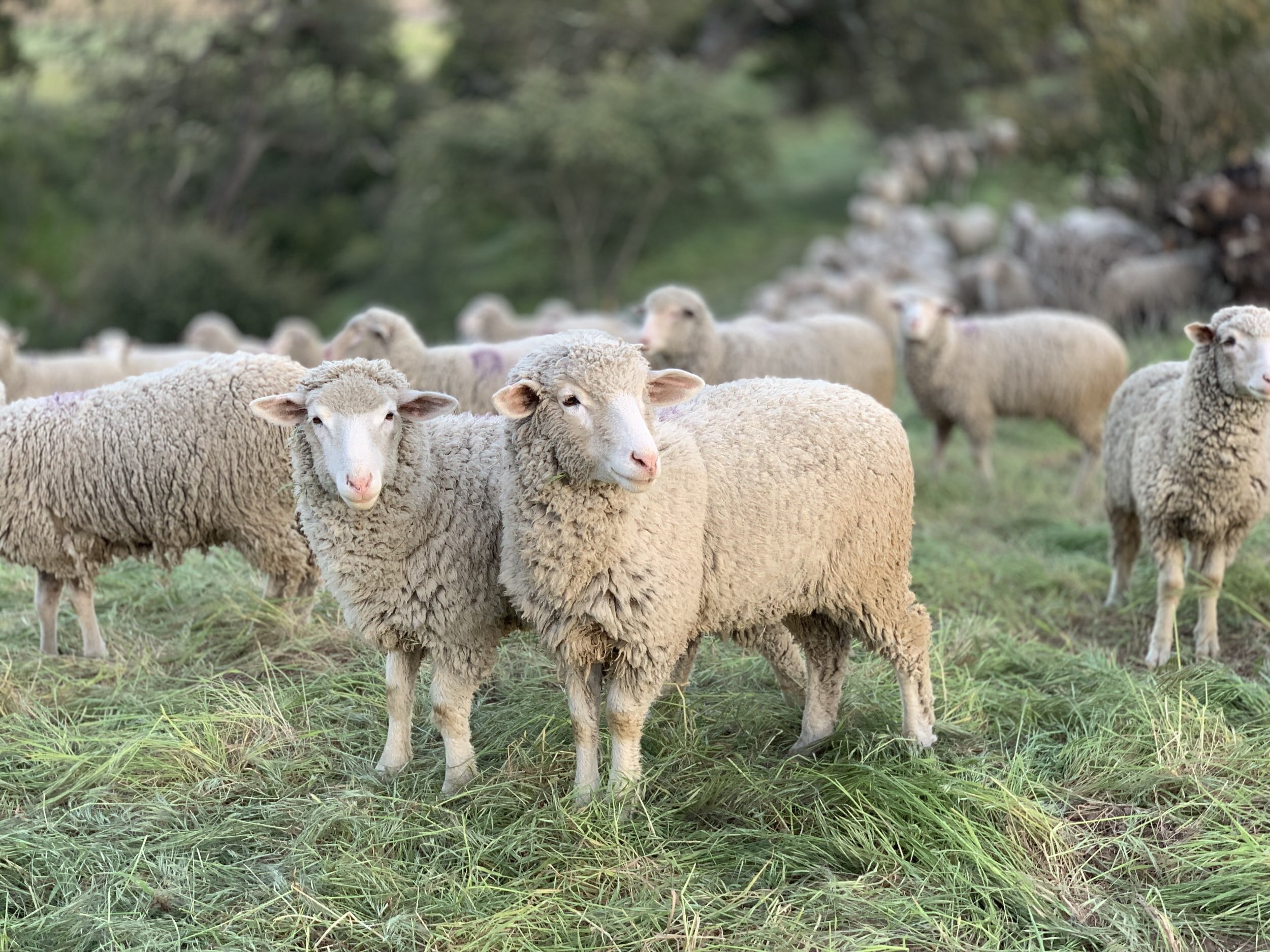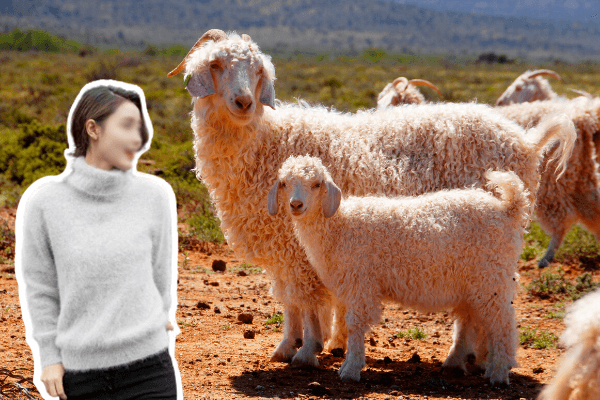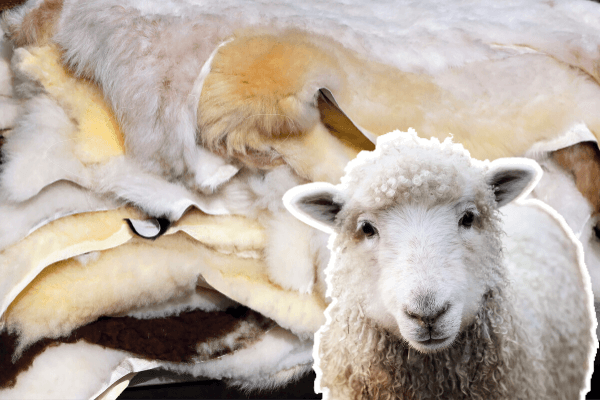
Stay warm without wearing animals this Winter
As the air turns colder, you may find yourself in the market for some new winter wardrobe or home essentials. While it's easy to stick with the brands and stores we know, there are companies out there that prioritise ethics and the environment just as much as we do. This is a great opportunity to align our values with our spending habits and make a positive impact on the animals and planet.
While most people are against the use of real fur in fashion, leather, wool, sheepskin, and down are yet to receive the same level of disapproval. Understanding where all the materials we wear and use come from, or who they come from, is an important step in becoming a more conscious consumers. Beyond shining a light on the use of animals in winter fashion and bedding, we’ve also compiled a list of animal-free alternatives for your next winter purchase, from boots and slippers to coats and bedding.
Fur
The fur trade is brutal, and unfortunately still prevalent. Every year, over 200,000,000 minks, foxes, raccoon dogs, rabbits, and chinchillas are bred and killed for their fur. This excludes the additional wild animals, such as coyotes and seals, who are hunted for their skin by popular brands such as Canada Goose (a company that shows no indication of moving away from coyote fur, and is proud of it, too). Fortunately, many companies are responding to consumer demand and making the decision to go fur-free.
Although there are no fur farms in Australia, we still import fur from Canada, the USA, Europe, China, Korea, Thailand, and the Philippines. While many consumers are rightfully opposed to the use of fur, there are several other common materials which should be critiqued in the same way.
Fur jacket made from fox fur.
Leather and suede
Leather is too often glamorised and associated with luxury and quality, just as fur once was. And just like fur, leather is the skin of an animal – in this instance, a cow, calf, buffalo, pig, goat, sheep, crocodile, snake, sting ray, seal, emu, deer, fish, kangaroo, horse, or even elephant, cat, and dog*.
While some leather may be a by-product of the meat industry, there are also billions of animals slaughtered each year specifically for their skin. The process of creating leather is also incredibly toxic to the environment, and can be dangerous, or even deadly, for workers. In Australia, leather and suede are produced locally, but they are also imported from other countries like China and India.
It's worth noting that there are currently no requirements to label leather products, which makes it difficult to know where and which species the leather comes from.
For more information on leather, head to our article on leather production.
Leather tannery
Cashmere, mohair, and pashmina Wool
Cashmere, mohair, and pashmina wool come from goats. They are bred by the millions, predominantly in China and Mongolia, and on a smaller scale in Australia. Unfortunately, to keep up with demand, higher numbers of goats are being bred and raised, which results in greater suffering for these animals and a significant environmental impact.
The goats are tied up and combed using sharp-toothed metal combs, which scratch deeply into their skin, causing bruising and injury. As the goats would naturally shed their coats when temperatures start to rise, they are often combed in the middle of winter, during the time when they need their coats most. As a result, many animals die from the cold. In all countries, once the goats are no longer of use, they are sent to slaughter as “cheap” meat.
Mohair sweater from angora goats.
Angora
Angora rabbits have long, silky hair, that is incredibly soft, warm, and strong. Angora production is the third largest animal fibre industry after wool and mohair, with China producing approximately 90% of the world’s supply. The industry exploits more than 50,000,000 Angora rabbits every year.
A PETA investigation found rabbits “screaming in pain and terror as workers ripped the fur out of their skin”. The rabbits are then left inside tiny filthy cages, where they will stay until they are forced to endure this process again in three months.
As the rabbits age, they grow less fur and after a few years of producing fur, they are killed and replaced.
Feathers
Down is the soft, fluffy, undercoating that ducks and geese have to keep warm. It is commonly used as insulation and padding inside a range of jackets, quilts, and pillows. Whilst companies claim that down is a by-product of the meat industry, this is only partly true. It has been estimated that 50-80% of feathers come from birds who have been plucked whilst fully conscious.
The world’s largest producer is China, accounting for 80% of global production. An undercover investigation by PETA, shows employees ripping fistfuls of feathers from the shrieking ducks and geese. Their bodies are often left with bloody wounds. Even if the down feathers were taken from their lifeless bodies, this once again, is no different to the use of fur.
Live plucking of ducks.
Wool and sheep skin
There is a common misconception that sheep are not harmed in the process of shearing. While they do need to be sheared, this is only because humans have altered domestic sheep through selective breeding. Merino sheep, who are used for wool, are descended from the Mouflon, wild sheep. They have been bred to have excess skin to produce extra wool. This makes them incredibly unsuited to Australia’s warmer climate. In order to combat flystrike – here flies lay eggs on soiled wool or open wounds, and maggots feed off the of the live sheep’s flesh – farmers practice muelsing, which involves cutting off the sheep tail often without pain relief. Female sheep are also used for breeding. Their babies are either used to continue the wool cycle or sold for meat.
Multiple undercover PETA investigations have exposed the cruelty involved with shearing sheep. Unfortunately, as workers are paid on volume of sheep sheared, they are often rough in an attempt to shear as quickly as possible. Undercover footage from Australian shearing sheds show sheep being kicked, punched, stepped on, and mutilated by the shearers. Some footage revealed sheep were being stitched up without pain relief.
Sheep can live for 10-12 years, with some even reaching 20 years! The wool industry, however, sends them to slaughter at just 5-6 years old because they are no longer profitable. Many are forced onto live-export ships and sent to slaughterhouses overseas. Sheepskin, like leather and fur, comes from the sheep once they have been killed.
Sheep skin
The rise of ethical alternatives
In 2023, we no longer need to use animal-derived materials keep warm. Alternatives to fur, leather, wool, cashmere, and feathers are available in abundance. Not only are these alternatives saving the lives of animals, but many have a lower environmental footprint – plant-based or recycled materials require less resources, and are often a by-product from another non-animal industry.
Entrepreneurs from all over the globe are experimenting with different plant-based materials. Adrián López Velarde and Marte Cázarez have created Desserto, made from cacti, and Dr Carmen Hijosa created Pinatex, from pinapple leaves. Other inspiring innovators are using apples, cork, mushrooms, soybeans, recycled paper, and of course, recycled plastic. Excitingly, we can expect to see more ethical brands using these materials to replace animal-skin products in the near future
Fashion
The fashion industry is finally booming with products that consider animals and the planet. Here are a few of our top picks:
Jackets
The Toast Society has marshmallow soft puffer jackets filled with industrial dent corn, cotton, and polyester to keep you toasty during the chilly winter months.
Patagonia’s insulated parker is insulated with Thermogreen 100% recycled polyester and has a soft recycled fleece lining.
Matt & Nat have an epic collection of coats, puffers, bomber jackets, and vegan leather jackets to keep you warm in all occasions!
Kathmandu’s Creede Women's Thermore Parka and Men’s Thermore Parkaa are filled with Thermore Ecodown, a high-quality alternative to down made from 100% recycled polyester.
PYRA have a range of women’s and men’s vegan puffer jackets to keep you warm – please note not all of their products are vegan.
Pangaia have created a range of jackets filled with wild flowers and bioploymer, designed to give the same feel as down, while being completely animal-friendly! Check out their FLWRDWN puffer jackets here.
If you’re heading to somewhere where the weather drops below zero degrees, Wuxly Movement has got you covered.
Shoes
From vegan UGG boot alternatives to ‘leather’ boots, Humankind shoes, Avesu shoes, Doc Marten and Vegan Style have you covered!
Wallets, Bags, and Belts
Looking for a new belt, wallet, or bag? Check out Matt and Nat and Thamon have you covered.
Wuxly Movement Coats
Bedding
When looking for new bedding, seek out bamboo, organic linen, microfibre, corn fibre, or microgel products, and avoid down, wool, and silk. With these top picks, you can rest easy knowing no animals were directly harmed in the making of your cosy bed:
Pure Zone’s Alternative Down Quilt
Pure Zone’s Bamboo Quilt
Bambi’s 100% biodegradable Ecorenew Ingeo Quilt
Eco Down Under’s Corn Fibre Pillow
If we’ve missed any of your favourite ethical brands or products, give them a shout out in the comment section below!
For more information on these industries, please visit the Issues page.







